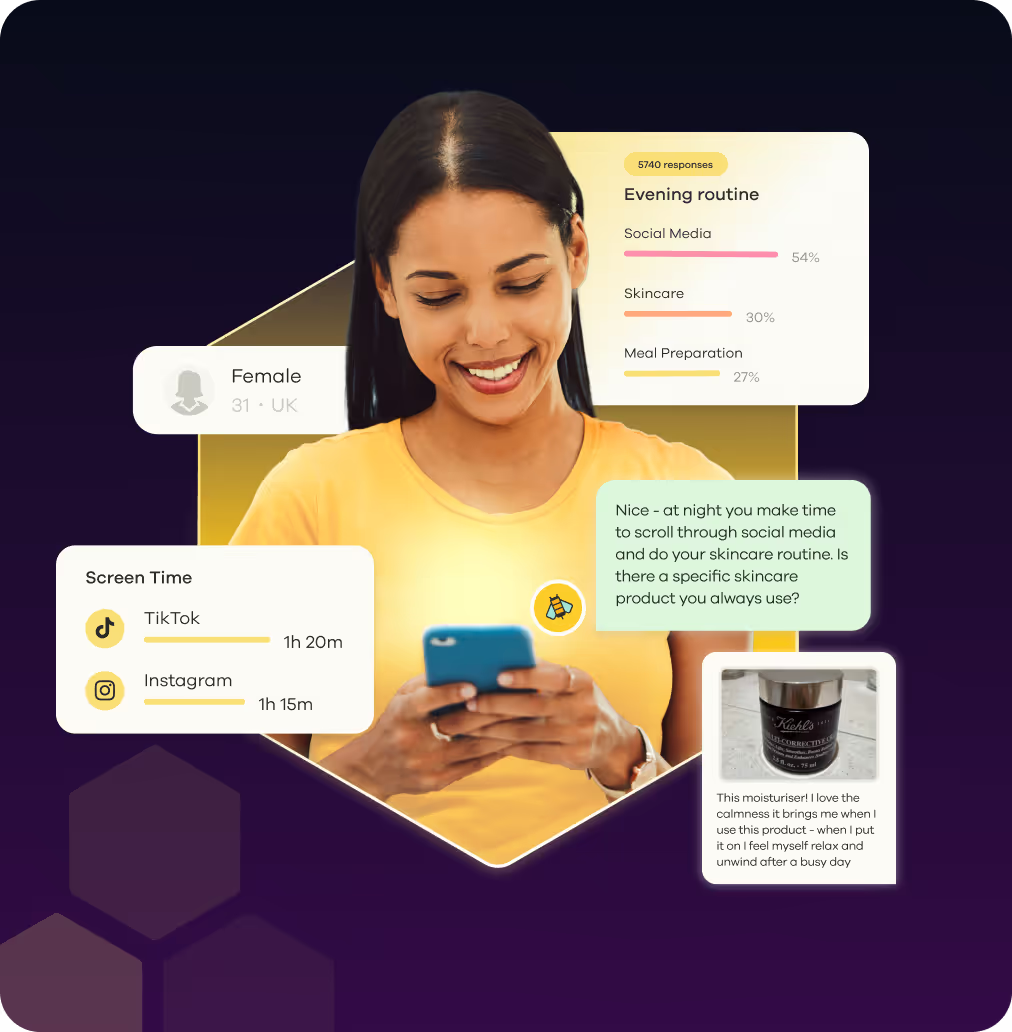Do you have multiple consumer segmentations or no segmentation at all? Does this make it difficult to decide which audience you should target to drive the growth of your brand and how? Can you relate to Ivan’s experience below?
“We have multiple segmentations - one from 2014 and one from 2018 - and each time, things change with our consumers. We decided that rather than being biassed and trying to fill the gaps through our own preconceptions, we needed a bottom-up approach to see how consumers were actually using our products.” - Ivan Arrington, Insights Lead, The Clorox Company
If the answer is yes, read on.
The ‘moment’ matters
The key to uncovering which audience you should target and how is to ask the right questions of your consumers. Traditionally, organisations thought that demographic factors and aspirations were enough to determine what consumers wanted and needed. But only 25% of our everyday choices are determined by this. The other 75% are driven by our immediate emotions and context.
So, to successfully land your brand communications, you need to understand not only your audience and your products, but also the occasion of use or consumption i.e. the moment in which consumers use or consume your products and the context around this. Demand spaces are the intersection of these three elements, adding a vital layer of context to your personas to give you the answers you need.
It’s a two way street
Occasions of use or consumption and personas heavily influence each other. If we look at personas specifically, each persona will have multiple occasions as they move throughout their day. The emotions they feel will change. The environment they’re in will change. The context in which they choose certain products will change.

For example, if you’re a person who values healthy eating, this attitude might prompt you to grab an apple at work when running between meetings. However, when you get home after a long day of back-to-backs, you might want to chill out on the sofa with a tub of ice cream. So, although your overall attitude towards food is healthy, this doesn’t reflect the reality of your choices throughout the day as you transition through different occasions.
“The danger that you always have with a more traditional approach is that you tend to define a persona by their single most important motivation and this is usually a functional motivation.\ \ This means you can get tunnel vision and can end up only thinking about these folks in one light. You don’t realise that they can overlap between demand spaces and occasions and you get into this world where everything is mutually exclusive.\ \ When you flip to contextual demand spaces, it allows you to do two things. It broadens your audience and it lets you think more holistically about who they really are, so you can hit them in the moment that matters most.” - Ivan Arrington, Insights Lead, The Clorox Company
So once you’ve created your demand spaces, how can you activate them to drive your communications strategy?
1. Uncover the key occasions for your audience
If you look at your audience from a demographic viewpoint only, you’ll struggle to understand what’s actually driving the decisions they’re making. However, when you layer in the contextual elements, you can bring your audience to life through the different occasions they experience.
These occasions will show you where the biggest opportunities lie when it comes to targeting their needs and tensions. It will also uncover where and how your products can fit into their daily lives.
2. Tap into micro-targeting to find the nuances
Once you’ve chosen your priority demand spaces, based on the occasions you want to target to reach your audience, you can take your targeting approach one step further. Micro-targeting will help you pull apart the differences within your broader audience to identify the nuances and narrow down your messaging.
For example, within your millennial audience, there may be two subgroups, who have distinctly different needs and media consumption habits in the same occasion. By uncovering this, you can make your campaigns more effective and efficient.
3. Frame your message around the moment
By understanding not only the driving need in that demand space, but also the context around it e.g. how they’re using or consuming a product, who with, when and where, you can position your product as the perfect solution in that specific moment.
This approach to your positioning will make it clear to your audience that you have an in-depth understanding of their daily experiences and that your products have been designed around this, increasing the relevancy of your offering and the receptiveness of your audience.





